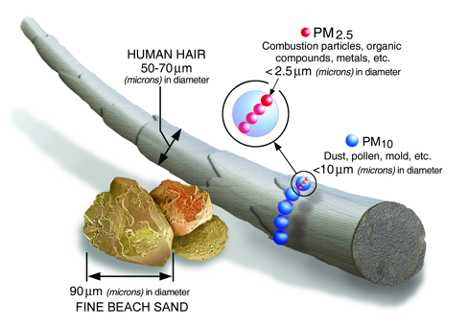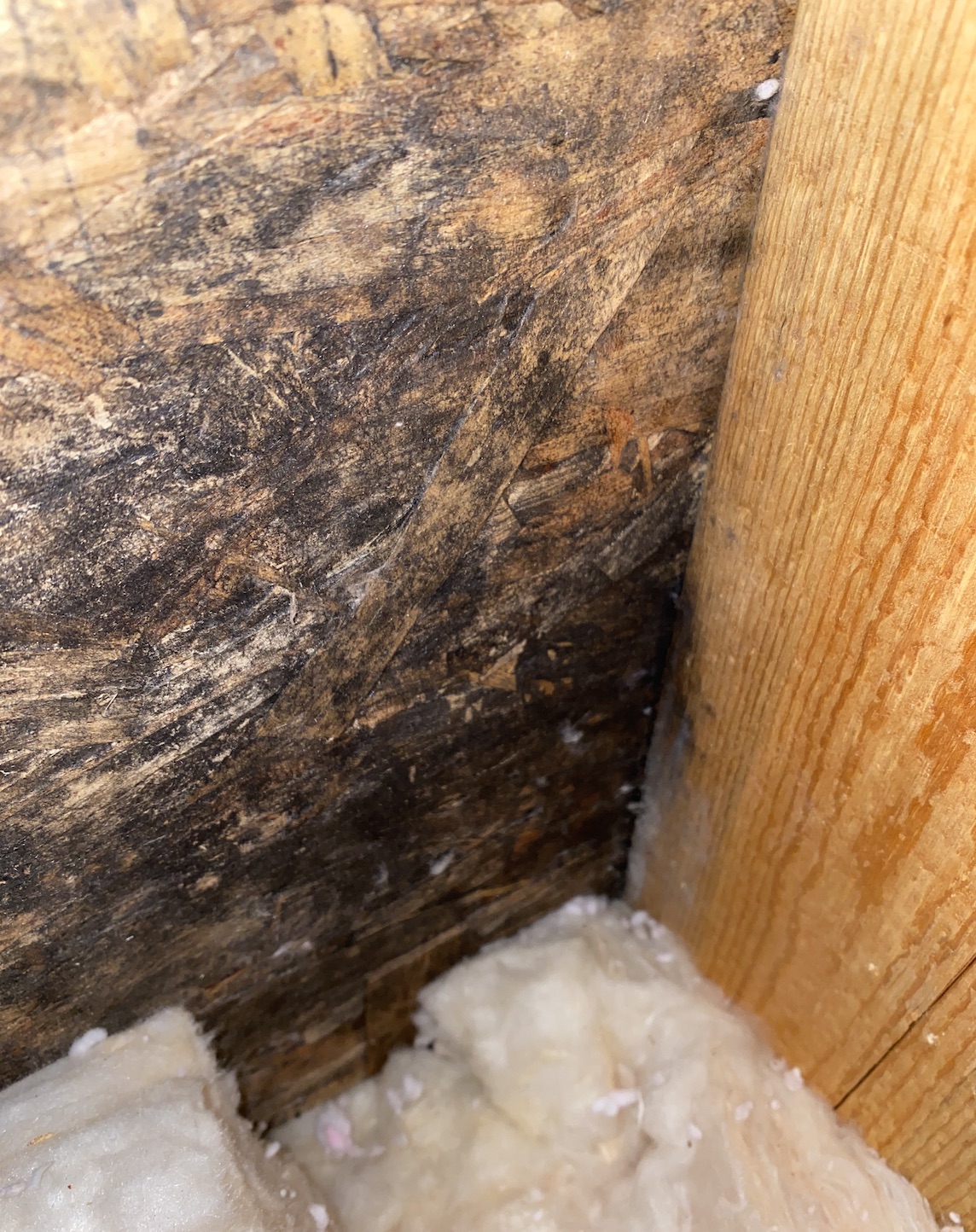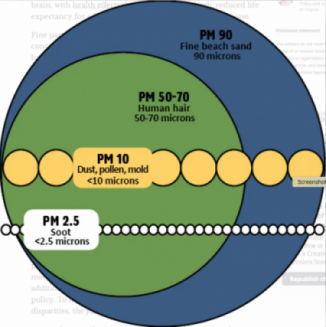
The World Health Organization attributes a long list of chronic illnesses and millions of premature deaths annually to polluted air inside and outside the home. Instead of offering a refuge from dirty air, our homes can harbor a variety of problem compounds we don’t even realize are there.
Air pollution comes in many forms. One area of concern is PM2.5—particulate matter measuring less than 2.5 microns in diameter. These microscopically small bits of debris can travel deep into the lungs and cause serious health problems, even death, says the U.S. Environmental Protection Agency. Volatile organic compound (VOCs), chemicals released by many materials used to build and furnish homes, are another concern.
Measuring these health risks once required tools costing tens of thousands of dollars. These are lab-grade devices, big and impractical to install in individual houses. But as technology advanced, manufacturers found ways to approximate these functions in much smaller devices that cost a few hundred dollars. Although not as accurate, they are now widely available, and because they are relatively inexpensive they give homeowners an opportunity to track air quality at home in a way that wasn’t possible a decade ago. What was a trickle of products five years ago now includes dozens of potential choices costing $300 or less.
Some of these consumer-grade devices measure PM2.5 concentrations, some measure both PM2.5 and total volatile organic compounds (tVOCs), and others also track C02, temperature, and humidity. Some units can be connected to a database that provides a network of real-time air-quality observations for a whole community. Others can be integrated with a home automation system to turn on a fan or other device when pollutants cross a certain threshold.
How well do they work? How long do they last? What compounds can be detected, and which ones…
Weekly Newsletter
Get building science and energy efficiency advice, plus special offers, in your inbox.

This article is only available to GBA Prime Members
Sign up for a free trial and get instant access to this article as well as GBA’s complete library of premium articles and construction details.
Start Free TrialAlready a member? Log in















7 Comments
I was just about to suggest an article about this. Thanks. I’ll agree with the conclusion, these are useful but in a pass/fail kind of way. Establish baseline, then investigate why when something jumps up. Sort the issue out, eventually pass the monitor on.
Contractors should consider this for a commissioning period on their projects.
Hi Andy.
I believe that the Living Building Challenge requires the type of new home testing you are suggesting. Seems like a smart idea to me too.
I've had a foobot for a couple years. The PM2.5 and VOC reading rise and fall when you would expect, such as rising from cooking. I have no idea whether the absolute values are close. The VOC reading does get fooled by opening and closing windows in summer. The worst aspect is the reading that they advertise as a calculated CO2 reading. It does not correlate at all with an actual CO2 meter or with the expected behavior based on ventilation rate and number of people in the house.
Thanks for the roundup. I've been running Awairs in my home and office for a few years and have had two of them fail on the PM2.5--eventually they must get some dust or something stuck in the sensor, because it spikes to maximum and stays there, even if I move it to a space where the other monitor reads low PM2.5. What I've learned: cooking has a significant impact on CO2 and VOCs, even with our good exhaust hood; CO2 is generally OK in our bedrooms at night; and CO2 can get above 1000ppm in our office if we have just a few more people than normal. I'm taking all of these with a grain of salt--it's more relative fluctuations than absolutes.
Great and timely article. Thank you. We are considering testing indoor air professionally. Does anyone have any recommendations on testing labs, professional equipment or a good place to learn more about this?
Hi Bo.
Check out this article. There is at least one company referenced that does IAQ testing. I don't remember how big they are, but may be a place to start.
Indoor Air Quality and VOCs
Thank you!
Log in or become a member to post a comment.
Sign up Log in